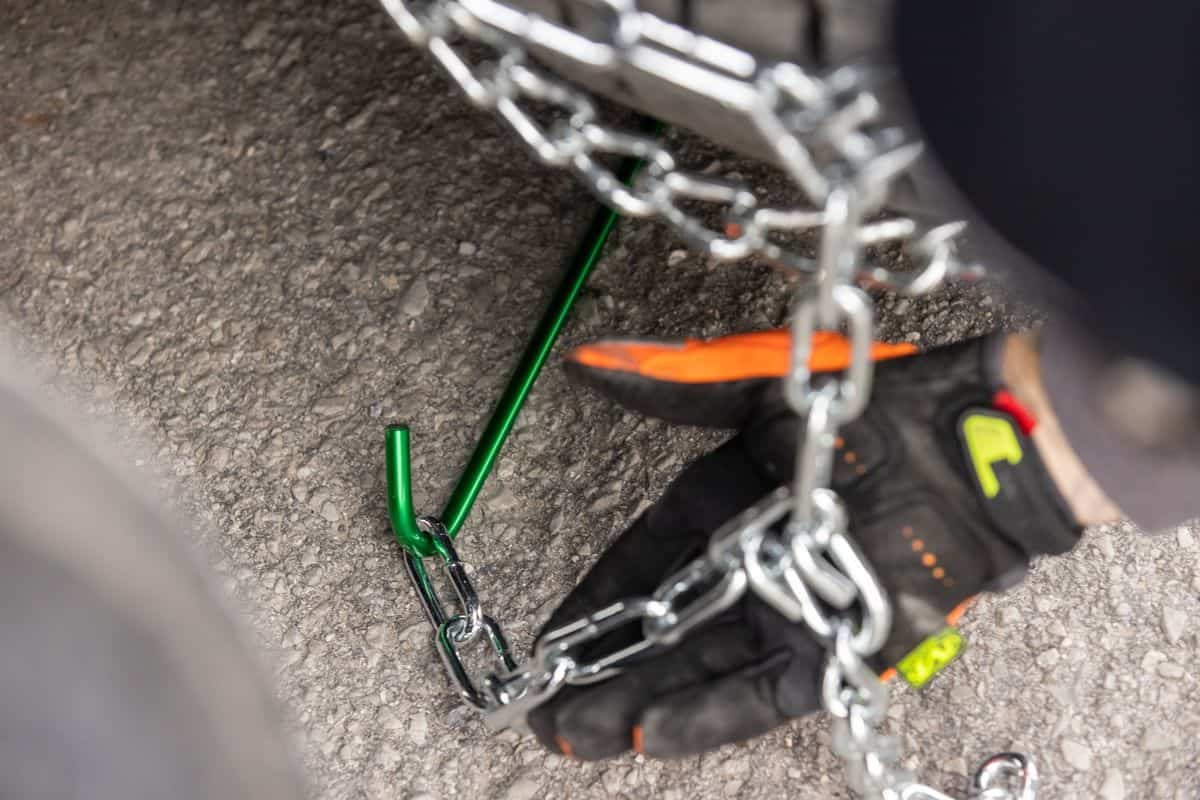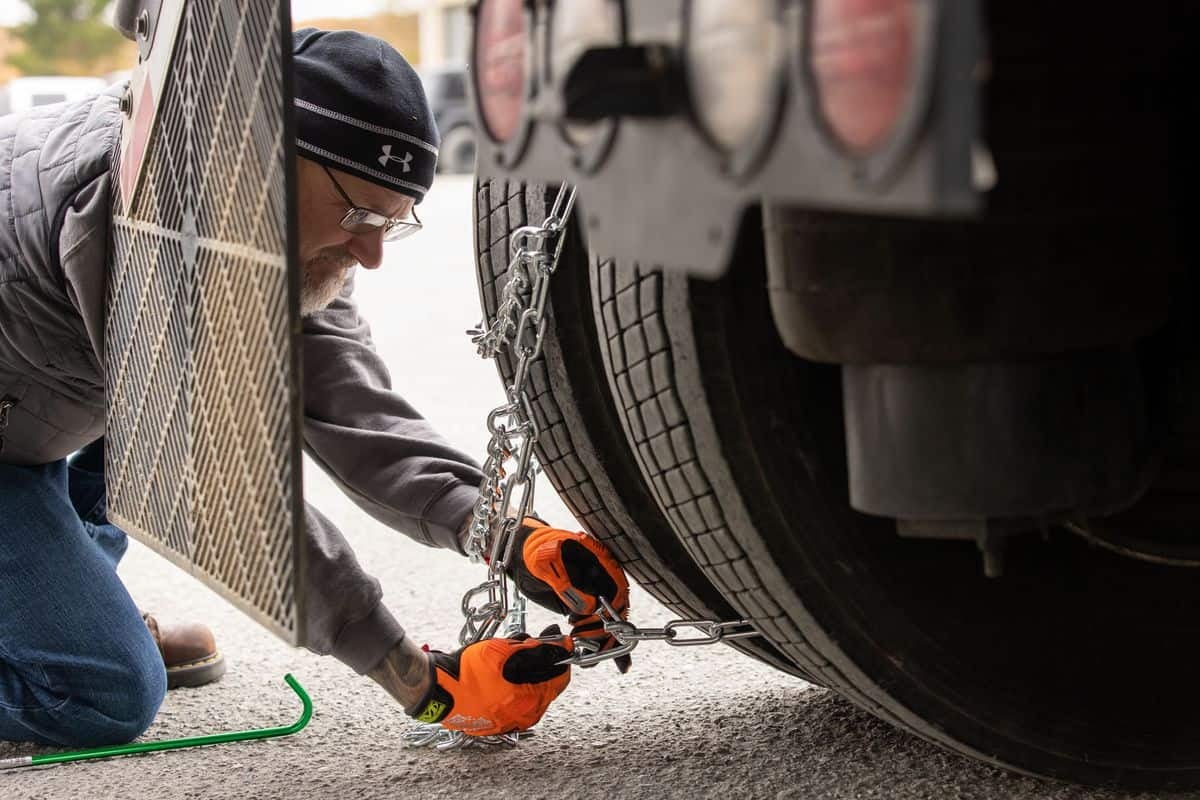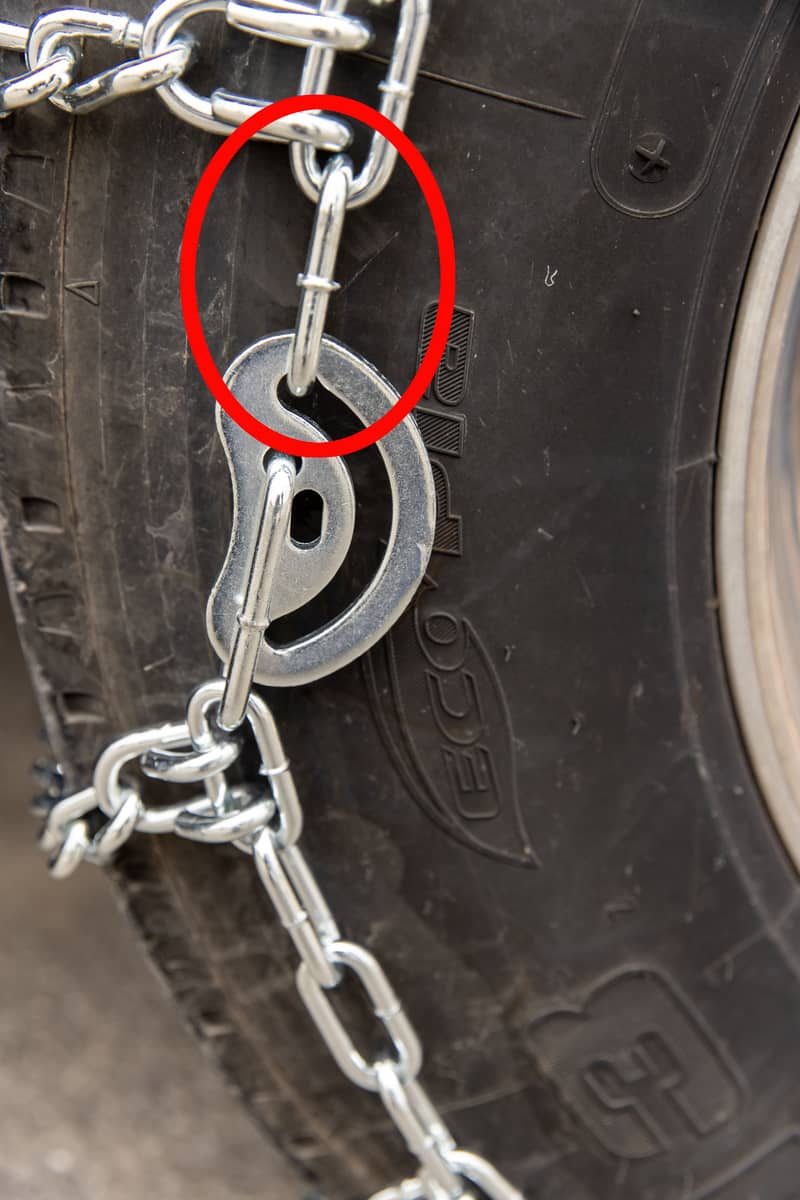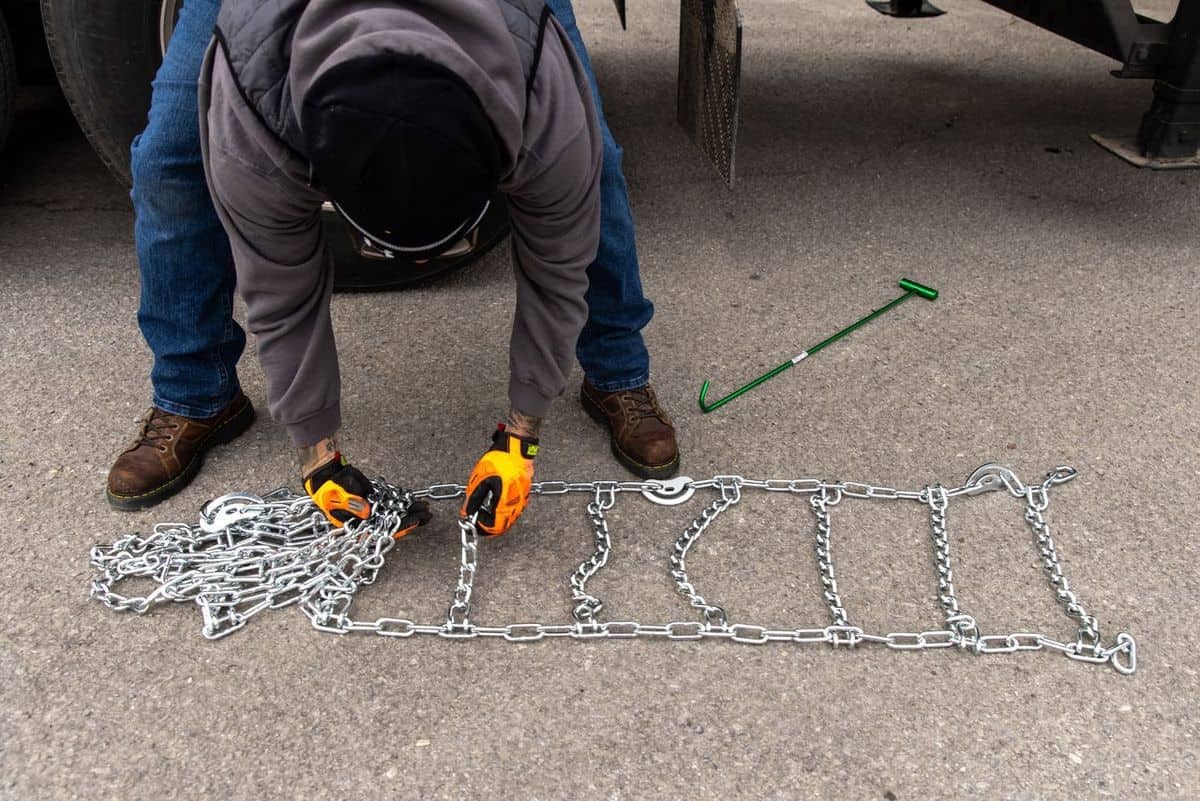
’Tis the season for snow and ice. Winter is a lovely time of year to admire tranquil snowfalls and to cozy up next to the fireplace. For truckers, however, this time of year is far from magical.
Whiteout conditions bring about white-knuckled driving for those darting across the nation’s frigid roadways. To safely trek in winter weather, truckers regularly depend on tire chains to gain better traction and to prevent wipeouts on icy roads.
While many truckers have had their fair share of experiences with tire chains and the threat of wintry weather, some may be new to the game or rarely drive in areas warranting their use.
Regardless, drivers may find themselves one day in a situation in which chaining up is mandatory.
Brian Runnels, Reliance Partners’ director of safety, steps through the basics of how to chain your tires when the snow starts falling.
Before you begin
Tire chaining isn’t a complicated practice — as long as you have the right tools for the job:
- Tire chain
- Gloves
- Fifth-wheel release hook
- Truck cam tool
- Bungee cords (at least two)
- Flashlight
First and foremost, tire chaining should be performed under the right conditions. Check the weather forecast and states’ Department of Transportation alerts for confirmation that chaining is the right course of action. You definitely want to avoid damaging your chains when they’re not needed.
Be sure to check chain laws as well. Chain laws and regulations vary from state to state. As one would expect, restrictions are greater in states with rugged topography and higher elevations. The strictest chain laws are perhaps found in the state most synonymous with the Rocky Mountains.
Colorado’s chain law applies to every state, federal and interstate highway within its borders from Sept. 1 through May 31. When the law is in effect, signs along state roadways will display messages alerting drivers to chain up.
Interstate 70, the state’s east-west thoroughfare, is heavily traveled and equally regulated to maintain CMV compliance. For instance, trucks weighing over 16,000 pounds or more are required to carry sufficient chains between Dotsero and Morrison in both directions.
Colorado requires that commercial vehicles with four or more drive wheels to chain four wheels. Dual tire chains are acceptable.
The penalty for noncompliance is a $50 fine plus a $17 surcharge.
Chaining requirements vary based on vehicle size and type, as well as from state to state, so it’s best to research which tires to chain before hitting the road.
Depending on how many tires you’re required to chain, the process can take a while. The last place you’ll want to chain up is on the side of a dark, snowy highway, so allocating time to perform the task is just as important.
Choose a nice clear area at a truck stop or parking lot, preferably during daylight hours, to break out the chains. Before you begin, make sure that the ignition is off, the truck is in park and the proper brakes engaged.
Getting started
Lay the chain flat on the ground next to the tire. With the chain spread out, check for any kinks or twists in the outer and inner chains as well as the cross chains before moving forward.
Next, drape the chain over the top of the tire. Runnels noted that the left-most cross chain should rest against the ground — this may require some adjusting.

Connecting the chains
Your next step is to connect the ends, starting first with the inner chain — this is where your fifth-wheel release hook comes in handy.

From the right side, slide the hook behind the front tire, hook side up, to meet the chain on the left. Hook the left-most chain to the release hook and promptly slide it back to the right, meeting the other chain. Remember to give the chain some slack. This may require you to briefly place most of the chains behind the tire to make the connection.
With the left-most chain still on the hook, clip the right side’s inner fastener to the second left-most chain — not the first. Now remove the release hook.
Bring the chain back around the tire and make sure that each cross chain is tight and straight.
Connecting the outer chains is a bit easier — simply join the right side fastener and left side chain together. A tight fit may require you to hook one or two links past the end chain.

Tightening it up
Things get tighter moving forward. The next step is to tighten the cam locks that line the outermost chain. The cam locks are C-shaped and should be facing outward (curved side out).
To begin, use your cam tool to twist each cam lock 180 degrees. Keep in mind that it may become harder to tighten each lock as you work your way around the tire. Upon completion, each cam lock should be oriented curved side in.
Runnels suggests beginning with the lower cams first and working up from there as doing the opposite results in decreasing leverage as you make your way down.
Bungee cords

Although the chains are nice and tight, you’ll want to make sure they’re secure. For added protection, bungee cords are used to prevent the cam locks from coming undone. This is achieved by stretching bungee cords across the diameter of the tire.
While the goal is to prevent the cam lock from shifting, don’t hook the bungee cord to the lock itself. Instead, hook it to the link adjacent to the cam lock — the link between the lock and the farthest cross chain — and connect the other end of the bungee cord to the chain directly opposite of the tire. Runnels said to make sure that the bungee’s hooks are facing outward, not inward.
If chain slack was created when connecting the chain ends previously, make sure to hook the bungee cord to the outstanding chains as to avoid lashing of the tires.
Taking off the chains
Taking off the chains is just as important as putting them on — it must be done properly. Simply put, remove the chains by following the instructions backward. Start with the bungee cords, then loosen the cam locks, followed by unhooking the chains altogether.
Once the chains are off, straighten them out on a flat surface, just like in the first step, to check for kinks and twists of any kind. Runnels strongly suggests taking time to check for damages so as to make a timely decision regarding repairs and replacement before they’ll be needed again.

Runnels explained that there’s a right way and a wrong way to store your chains. Rather than clumping them together, he advises drivers to follow his “pick one, skip one” method:
With the chains laying flat, make your way to one of the ends and begin picking up the chain at its cross chains. Applying Runnels’ “pick one, skip one” method, this involves picking up every other cross chain until its nicely bundled in your hands.
Runnels advises placing the chains on a hanger if you own one. If they’re to be stored in the side box, he said to wrap the chains with bungee cords to maintain their neatness.
You may also like:
Prolonged uptick in truck and trailer orders ‘cause for concern’







